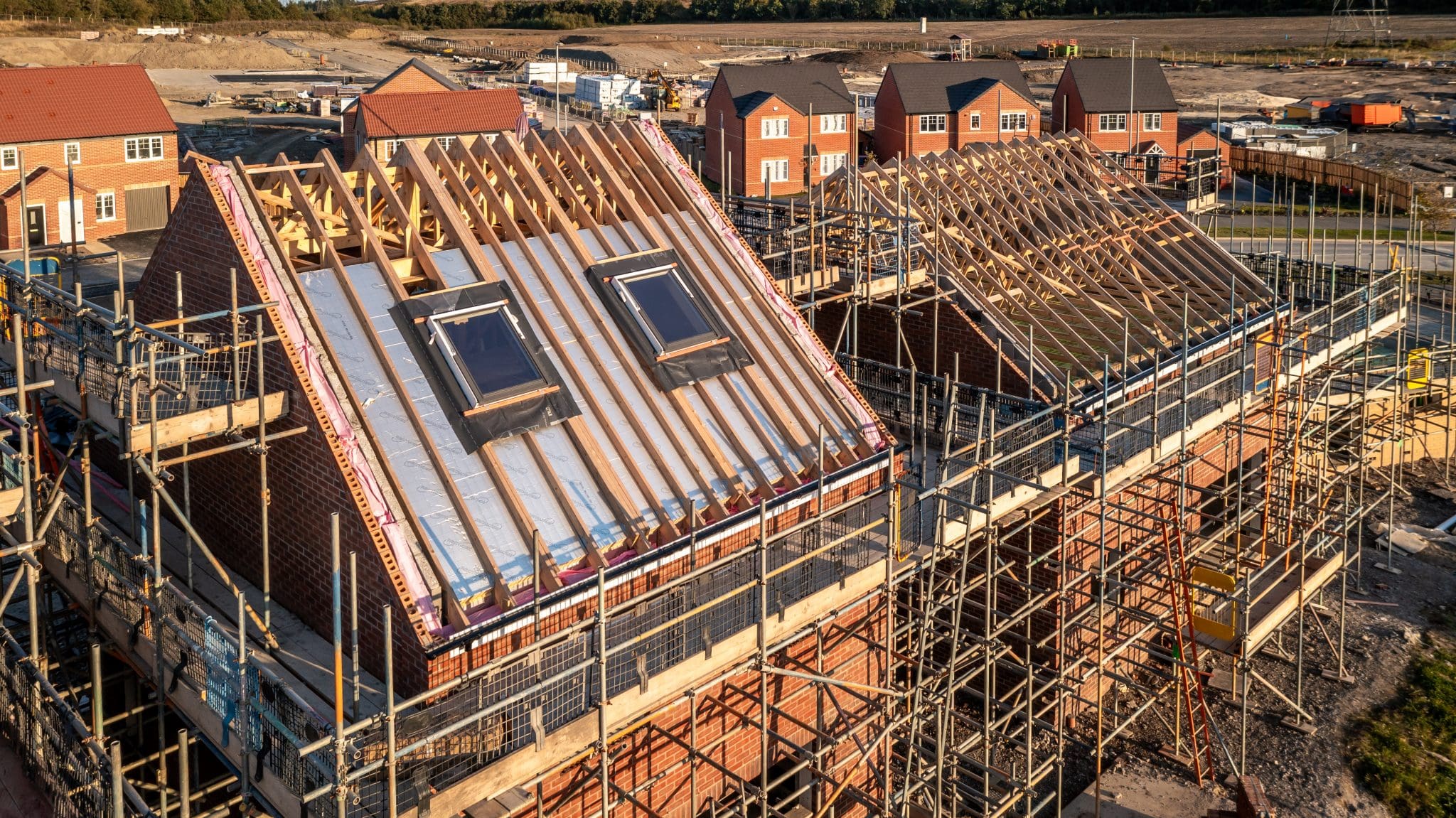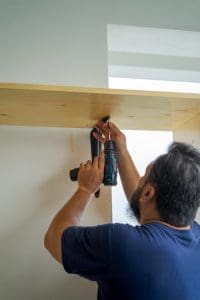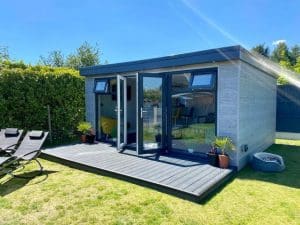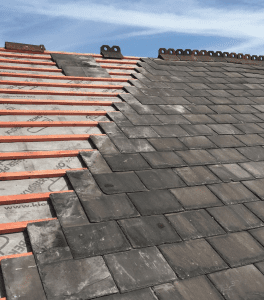Choosing the right roofing type for your home is a critical decision that impacts not only your property’s visual appeal but also its longevity, energy efficiency, and overall protection against the elements. With a wide array of roofing materials available today, it can be challenging to determine which option best suits your specific needs. Key factors such as budget, climate conditions, maintenance requirements, and architectural design all play a crucial role in making this decision.
In this in-depth guide, we’ll explore some of the most popular roofing materials on the market, discussing their advantages and disadvantages, and how they align with different house styles. Whether you’re constructing a new roof for a residential property or replacing an old one, this information will help you make an informed choice that best suits your home and circumstances. For expert advice or installations, 3D Construction is here to offer bespoke roofing solutions tailored to your needs.
Slate Roofing: Timeless Elegance and Exceptional Durability
When it comes to durability and classic beauty, slate roofing stands out as one of the best options available. Known for its high-end aesthetic, slate roofing is often found on luxury homes, historic buildings, and properties with traditional architectural designs. The durability of slate is truly remarkable, as a well-installed slate roof can last well over 100 years, making it a long-term investment for homeowners who prefer quality and longevity over frequent replacements.
Beyond its visual appeal, slate is incredibly resistant to extreme weather conditions, fire, and rot, making it a solid choice for homes in areas prone to heat or wildfires. Slate’s durability also extends to its resistance to insects and other pests, ensuring that your roof remains intact even in challenging environments.
However, there are drawbacks. Slate is a heavy material, which means your home’s structure must be strong enough to support its weight. Additionally, slate roofs require specialist installation, and finding contractors skilled in slate roofing can add to the overall cost. Despite the higher initial investment, if you’re seeking a roof that adds sophistication and offers long-lasting protection, slate roofing could be an excellent choice.
Flat Roofs: A Sleek, Modern Option with Maintenance Requirements
Flat roofs have grown in popularity, particularly in modern architectural designs and commercial buildings. They offer a clean, sleek appearance, ideal for minimalist homes. Flat roofs typically use different materials compared to pitched roofs, relying on rolled roofing or other membrane-based materials, which are cost-effective and relatively easy to install.
While flat roofs offer a distinct look, they do come with some challenges. The lack of slope means water drainage can become an issue, especially in regions that experience heavy rainfall. Proper drainage systems must be in place to prevent water pooling, which can lead to leaks or damage over time. Additionally, flat roofs tend to have a shorter lifespan compared to pitched roof types, which means regular maintenance is essential to ensure longevity.
For homeowners who love the minimalist, modern aesthetic, and are prepared for the upkeep, flat roofs can be an affordable and stylish option. Rolling materials and membrane solutions can provide a cost-effective solution, but ensure that maintenance plans are in place to avoid future issues.
Clay and Concrete Tiles: Classic Beauty and Long-Term Reliability
Clay tiles have been used in roofing for centuries, known for their timeless beauty, excellent durability, and ability to withstand harsh weather conditions. Clay tiles can last up to 100 years and are highly resistant to fire, rot, and insect damage. This makes them a particularly popular choice in warmer climates, where these risks are more prevalent.
Concrete tiles, on the other hand, offer a more affordable alternative to clay tiles while maintaining many of the same benefits. Like clay, concrete is durable and weather-resistant, though slightly heavier, meaning that structural reinforcement may be necessary to support the added weight. Both materials excel in extreme weather conditions, providing reliable protection against high winds, rain, and even cold temperatures.
If you’re looking for a roofing material that combines aesthetic appeal with longevity and minimal maintenance, clay or concrete tiles are excellent choices. For those on a tighter budget, concrete offers similar benefits at a lower price point, without sacrificing too much in terms of appearance or durability.
Green Roofs: A Sustainable and Unique Choice
Green roofs, also known as living roofs, are becoming increasingly popular as more homeowners seek sustainable, eco-friendly solutions. These roofs feature layers of soil and vegetation planted over a waterproof membrane, creating a unique green space that offers numerous environmental benefits. A green roof provides natural insulation, helping to regulate indoor temperatures and lower energy costs. They also help reduce stormwater runoff, improve air quality, and contribute to local biodiversity by supporting plant life.
While green roofs are a visually striking and environmentally conscious option, they do come with higher upfront costs and structural requirements. The additional weight of the soil and plants means that your home must have a reinforced structure to support the roof. Regular maintenance is also required to ensure the vegetation remains healthy and the roof continues to function effectively.
For homeowners interested in an innovative roofing solution that offers sustainability and a distinctive look, green roofs are worth considering. While the investment is higher, the long-term environmental benefits and energy savings can be significant.
Asphalt Shingles: Budget-Friendly and Versatile
Asphalt shingles are the most common roofing material in the UK due to their affordability and versatility. Available in a wide range of colours and styles, asphalt shingles can complement nearly any architectural design. They’re relatively easy to install, making them a popular choice for homeowners looking to save on installation costs.
Asphalt shingles perform well in most climates, but they tend to have a shorter lifespan compared to other roofing materials, typically lasting 20-30 years. They also offer less resistance to extreme weather, such as high winds and heavy rain, meaning that they may need more frequent repairs or replacements.
If you’re working within a tight budget but still want a reliable and stylish roof, asphalt shingles are a practical choice. They may not last as long as slate or metal roofs, but they provide an affordable option with solid performance.
Metal Roofing: Strength and Longevity
Metal roofing, particularly standing seam metal roofs, offers superior durability and strength. Metal roofs are ideal for areas prone to severe weather, such as heavy winds, rain, and snow. They can last anywhere from 40 to 70 years, making them a sound long-term investment. In addition to their strength, metal roofs are fire-resistant and low maintenance, requiring little upkeep compared to other roofing materials.
One of the main drawbacks of metal roofing is the cost. Metal is more expensive than asphalt shingles and other common roofing materials, but its long lifespan and durability make it a worthwhile investment. Additionally, metal roofing can be noisy during rain or hail, but proper insulation can minimise this issue.
For homeowners seeking a durable, low-maintenance roofing solution that can withstand the elements, metal roofing is an excellent option.
Final Thoughts: How to Choose the Best Roofing Type for Your Home
Selecting the best roofing type involves considering a variety of factors, including your local climate, budget, and the architectural style of your home. Here’s a quick overview of the options:
- Slate roofing: Ideal for those seeking long-term durability and classic elegance, but with higher initial costs and structural requirements.
- Flat roofs: Offer a modern, minimalist look but require regular maintenance due to drainage issues.
- Clay and concrete tiles: Provide beautiful, long-lasting protection against the elements, though they are heavier than other materials.
- Green roofs: Eco-friendly and energy-efficient, but come with high upfront costs and structural considerations.
- Asphalt shingles: Budget-friendly and versatile, but with a shorter lifespan.
- Metal roofing: Extremely durable and low maintenance, but with a higher price point.
If you’re still unsure which roofing material is best for your home, 3D Construction can help. Our experienced team offers expert advice and a range of roofing services tailored to meet your needs. Contact us today to discuss your project and find the perfect roofing solution for your home.




